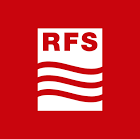RFS news roundup: May/June
Eurovision demonstrates 5G broadcast potential
“In May Eurovision saw a fantastic celebration with Eurovision drawing together countries across Europe. It’s one of the largest broadcasting events in Europe and this year was also notable as a real showcase of the possibilities of 5G broadcast. The European Broadcasting Union (EBU) member Rai demonstrated the first European multi-site 5G Broadcast, delivering the Eurovision Song Contest (ESC) live to 5G Broadcast enabled mobile devices. The success of the trial points to the possibilities of what can be achieved with 5G broadcasting and lays a foundation for further trials which will have a huge impact on the delivery of over the air tv transmission”
Hans-Peter Quade, EMEA Product Line Manager – Broadcast at RFS
5G connections to skyrocket by end of 2022
5G is gaining staggering momentum with 5G subscriptions set to jump from 540 million connections at the end of 2021 to more than 1.3 billion by the end of 2022, according to research from Omdia. With huge adoption rates comes added pressure for operators to expand their infrastructure to support this rapid growth. From a strategy perspective this means selecting solutions that balance speed and ease of roll out, with delivering long term return on investment. This may mean taking a different approach to previous network generations, for example relying on microwave for backhaul rather than fiber, but getting those key decisions right will be critical to both delivering promised services and reaping the rewards of the 5G momentum we are seeing.
Peter Raabe, Strategic Marketing and Transformation Director at RFS
Boost for rural coverage in Germany
Rural coverage has been a challenge for service providers the world over for years. How to balance the cost and logistical challenges of roll outs has been a conundrum that has been challenging to solve and exacerbated a digital divide in many countries. May saw Germany, alongside other countries including Spain and China, announce further commitment to delivering rural connectivity. Connectivity is crucial to modern society, and it is fantastic to see operators making a significant push to reach the entire world population. It is therefore vital that their efforts are supported by innovations on the equipment side. Antenna designers need to push capabilities with solutions designed specifically for rural deployments, our dual band solution for rural environments is one example. Only with a concerted effort across the industry will we see comprehensive coverage that connects everyone, everywhere.”
Benoit Bled, Product Line Manager - Microwave Antenna Solutions at RFS
RFS in the news: H1
It’s been an incredibly busy first half at RFS with some significant launches demonstrating our ongoing commitment to addressing industry challenges through innovation. With this in mind, we round up some of our biggest announcements of the year so far and look forward to what is to come over the next six months.
- Complete portfolio to support connected city deployments: A key launch this year has been our Urban Based Infrastructure (UBI). The UBI architecture brings together a full range of connectivity solutions and services to give MNOs, neutral hosts and enterprise customers the reach and coverage necessary to deliver a range of connected city applications.
- Getting One World Trade ATSC3.0 ready: We were thrilled to announce RFS had expanded the antenna and combiner infrastructure atop One World Trade Center to enable delivery of next generation broadcasting to 7.45 million households across the New York City area. This will enable broadcasters to take advantage of ATSC 3.0 features, including HDR, interactivity, and transmission to mobile and hand-held devices.
- Dual band launch: A new generation of 1-ft and 2-ft E-band microwave antennas are already helping mobile operators around the world take better advantage of strategic millimeter wave frequencies in the 71 to 86 GHz range. Since their initial release, thousands of the extremely robust, super-high-capacity E-band antennas have been deployed to increase backhaul capacity in urban areas. The newest E-band microwave antennas combine the highest operational windspeeds available with superior electrical performance to help operators address key 5G backhauling challenges.


